

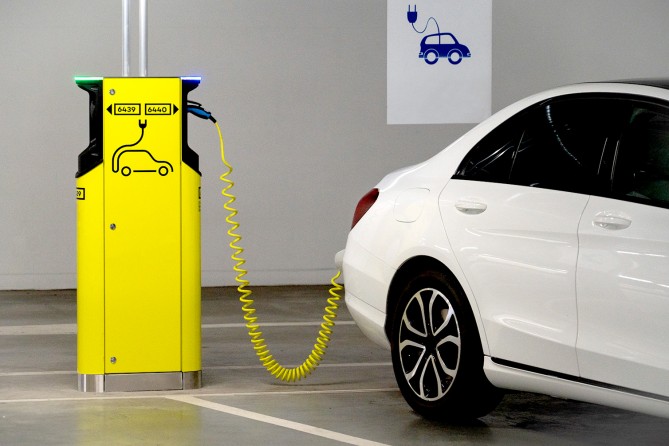
When several residents charge their vehicles on a shared meter, the charging costs must be paid by a third party. This may be a Charge Point Operator (CPO) or the co-ownership (the property manager or the association of co-owners - ACO). The shared meter and the meter at each charging point are read, and everyone pays the amount corresponding to their electricity consumption.
Electric charging points have their own internal meter. Together, these charging points are connected to a smart meter which only measures the electrical charging in the building. The charging points are in continual communication with a management platform, stating the precise power consumption of each user.
To fully understand the management of electric charging stations in a building, a distinction must be made between:
There are several possible scenarios, depending on the level of autonomy and flexibility desired by residents in managing their electric charging costs.
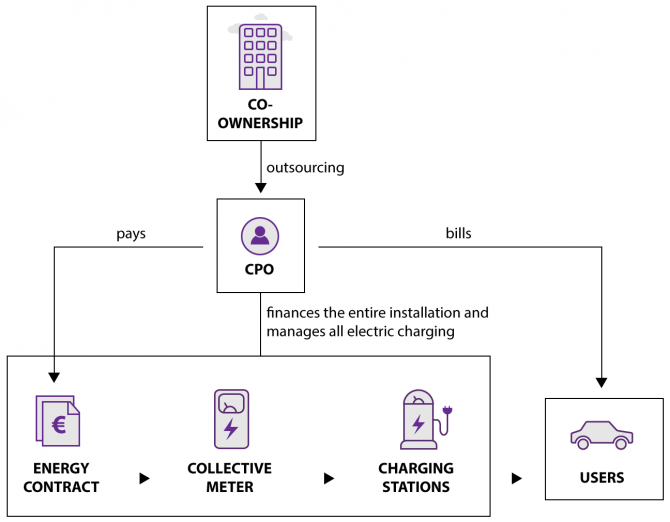
The co-ownership hires a Charge Point Operator (CPO) to install and manage all the charging infrastructure. The CPO installs all charging stations at their own expense, as well as the wiring and meter required to connect them. It also takes over the energy contract in its name.
Residents are billed directly by the CPO according to their electricity consumption, without going through the co-ownership. The CPO recovers its investment from the charging costs.
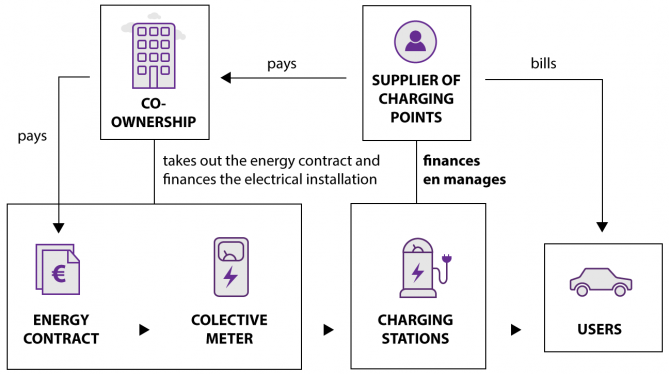
The co-ownership finances the electrical installation (meter, wiring and connection) and takes out the energy contract in its name. The residents who wish to have a charging station therefore partly finance the charging infrastructure. The charging stations are financed and managed by a supplier of charging stations..
The supplier of the charging stations bills each resident directly for the amount of electricity used for charging. They recover their investment from the charging costs and pay the co-ownership for the energy consumption.
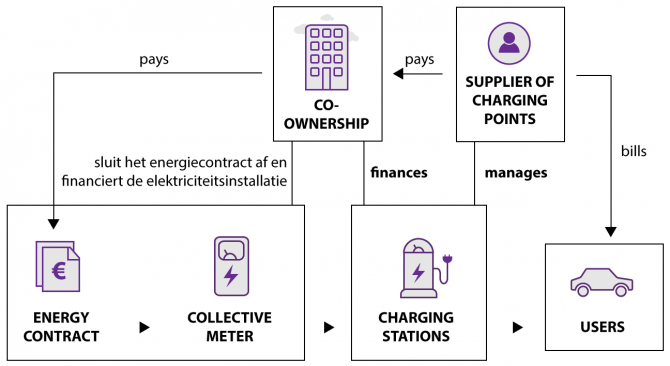
The co-ownership finances all the charging infrastructure and takes out the energy contract in its name. Individual homeowners may be responsible for financing charging stations. The residents own the charging stations, but the co-ownership outsources the management and billing of the electricity consumption to the supplier of the charging stations.
The supplier bills each resident directly for the amount of electricity used for charging. They recover their administrative fees from the charging costs and pay the co-ownership for the energy consumption.
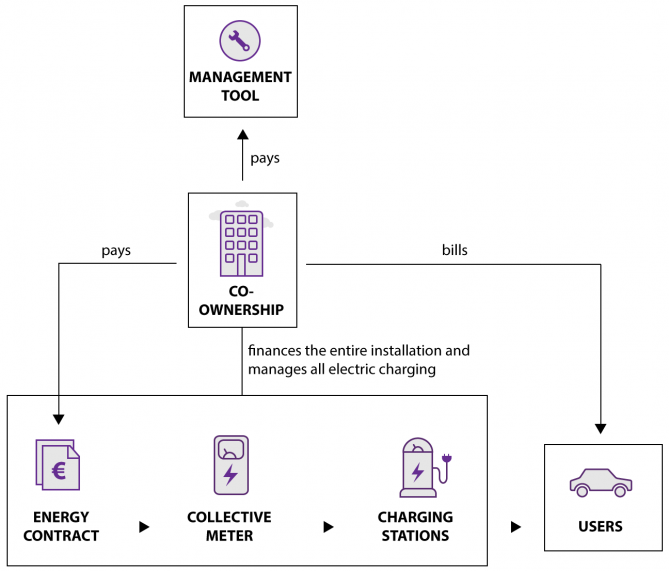
This scenario requires the most work from the co-ownership, but also offers the most flexibility. The co-ownership finances all the charging infrastructure (meter, wiring, connection and charging stations). Individual homeowners may be responsible for financing charging stations. It takes out the energy contract in its name and also manages the billing of charging sessions.
For this, the co-ownership invests in a management tool made available by the charging station provider. The property manager reads the meter at each charging point via the platform provided by the supplier of the charging stations, and bills each resident for charging costs.
As you can see, there is no standard solution. Each model has its advantages and disadvantages, depending on its degree of flexibility and the scale of the investment required. The interest of each solution also depends on the type of resident of the building. Indeed, the choice of investments to be made may vary depending on whether the majority are tenants or owners. Generally speaking, the higher the investment, the more autonomy of the model.
For co-ownerships, an own financing model combined with outsourced management is often used. This model makes it easier to add charging stations in the future, and does not increase the workload of the co-ownership. The initial investments are higher, but can be shared between multiple residents.
How do I install my charging stations?
Did you know that it is not advisable, or even prohibited in some cases, to install a charging station behind your own electricity meter in a building? To clarify things, Sibelga has developed detailed technical specifications and a video explaining how to install electric charging stations in buildings.
Subscribe to our newsletter and stay informed about energyfacts.